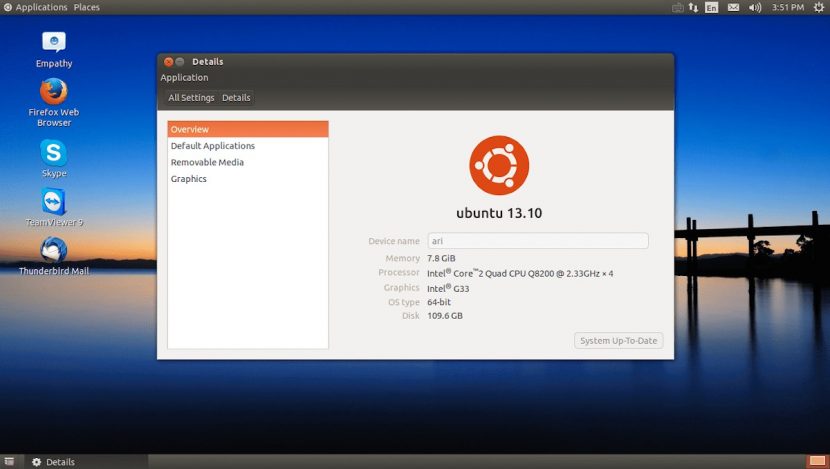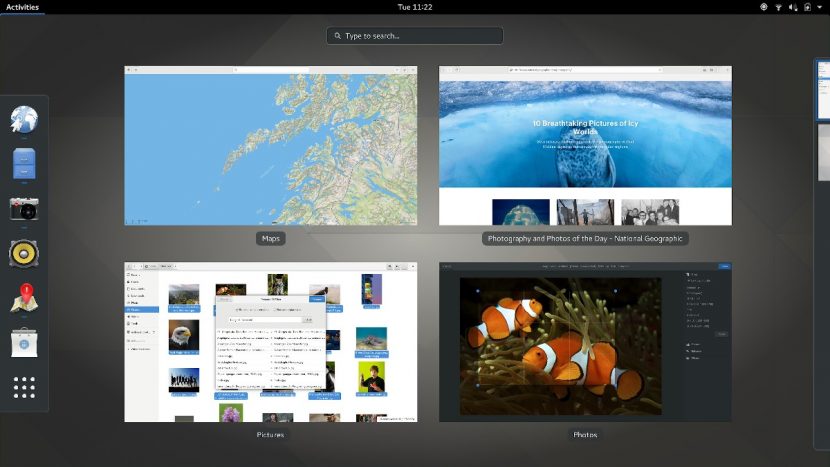
Mutter and Metacity: Window Managers for Desktop Environments
Mutter and Metacity They are 2 known and widely used Window Managers within the wide range of options available in the World of GNU / Linux distributions.
Recall that the Window Managers, also known as Window Administrators, are that part of the Operating system, that is, the program or application that is responsible for shaping the visualization of the Graphical User Interface (GUI), for which purpose the user can communicate with the Operating system In a simple way.
The Window Managers across GNU / Linux Operating Systemsare often confused with Desktop Environments, but in reality, the former are usually part of the latter, that is, they are usually an integrated and native component of the latter. However, there are many Independent Window Managers, so they can be used in various Desktop Environments. In the case of Mutter and Metacity, these were created to be used originally on the GNOME Desktop Environment.

Windows and MacOS Windows Manager
While, for example, in Windows, the Window Manager is known as a program (dwm.exe) called Desktop Window Manager (DWM), which previously to Windows 7, was controlled through a the service that could be disabled, thereby disabling all non-essential visual effects.
After Windows 7, it became a more integral part of Operating system, becoming vital to create the entirety of the GUI known. And in Windows 8 and 10 This integration has been deepened even more, although currently it has improved a lot in the management of the resources it requires to operate, which makes it unnecessary to deactivate it to obtain improvements. Currently, the DWM you can manage from transparent windows, live taskbar thumbnails, Flip3Ds, and even offer support for high resolution monitors.
En MacOS, since 2003, the Window Manager "Exposé", which was part of the Mac OS X Panther Operating System (10.3), and it had excellent graphic power, and it was very useful and comfortable to work with the advantages and the files. Then it ended up becoming the current one Window Manager "Mission Control" in 2011, being integrated into the Mac Operating System OS X Lion (10.7).
Mutter and Metacity Window Managers
metacity
When metacity was released, it was intended as a Window Manager for GNOME, with a focus on simplicity and usability more than in the news or tricks. At first, I use GTK + 2 to show the window frames, which meant that it inherited the colors, fonts, among other elements, from the GTK + theme used by the Desktop Environment.
metacity was Window Manager default of GNOME 2 Desktop Environment until it was replaced by Mutter in GNOME 3. However, it is still used by this one, through Gnome Flashback, a session for GNOME 3 that provides a user experience similar to the sessions in the series GNOME 2.x. Then now metacity is based on GTK+3.
Eg metacity, the arrangement of buttons in window decorations can be configured to change the selection, position and order of buttons in the upper corners of a window. This includes the classic window buttons for minimizing, maximizing, and closing a window, as well as a button that displays the window's context menu.

"Before the introduction of Metacity in GNOME 2.2, GNOME used Enlightenment and then Sawfish as its window manager. Although Metacity is part of the GNOME project and is designed to be integrated into the GNOME desktop, it does not require GNOME to run, and GNOME can be used with various available window managers that support the part of the ICCCM specification that GNOME needs.”Metacity Wiki on Wikipedia
About metacity Much more information can be found on the following sites: LaunchPad, Gnome Wiki, GitLab Gnome y Wikipedia.
Mother
Mother it is a small but modern Window Manager, based on GTK +3 and Clutter (Library or Graphic Toolkit) to do everything you need. It was designed as evolution based on Metacity Clutter, since this was very simple or "boring" according to its creator. And its name is formed by the abbreviation of Metacity Clutter.
Mother shows and manages the Desktop Environment through OpenGL. Because it combines a sophisticated display engine using Clutter with robust window management logic inherited from the Windows manager metacity. Therefore, Mutter has a high impact on the graphics performance of the system.
Finally, it can be highlighted that Mother is a Wayland display server or with a Window Manager X11 and a Composition library. Also Mother It contains functionalities related, among other things, to window management, window composition, focus tracking, workspace management, key binding, and monitor settings.

"Although Mutter can be used on its own, it is primarily intended to be used as the display core of a larger system like GNOME Shell. For this reason, Mutter is highly extensible through plugins, which are used both to add fancy visual effects and to rework window management behaviors to meet the needs of the environment.". Gnome Wiki on Mutter
About Mother Much more information can be found on the following sites: LaunchPad, Gnome Wiki, GitLab Gnome y Wikipedia.

Conclusion
We hope this "useful little post" on «Gestores de Ventanas» called «Mutter y Metacity» who are natives of «Entorno de Escritorio GNOME», is of great interest and utility, for the entire «Comunidad de Software Libre y Código Abierto» and of great contribution to the diffusion of the wonderful, gigantic and growing ecosystem of applications of «GNU/Linux».
And for more information, always do not hesitate to visit any Online library as OpenLibra y jedit to read books (PDFs) on this topic or others knowledge areas. For now, if you liked this «publicación», don't stop sharing it with others, in your Favorite websites, channels, groups, or communities of social networks, preferably free and open as Mastodon, or secure and private like Telegram.
Or simply visit our home page at DesdeLinux or join the official Channel Telegram from DesdeLinux to read and vote for this or other interesting publications on «Software Libre», «Código Abierto», «GNU/Linux» and other topics related to «Informática y la Computación», and the «Actualidad tecnológica».